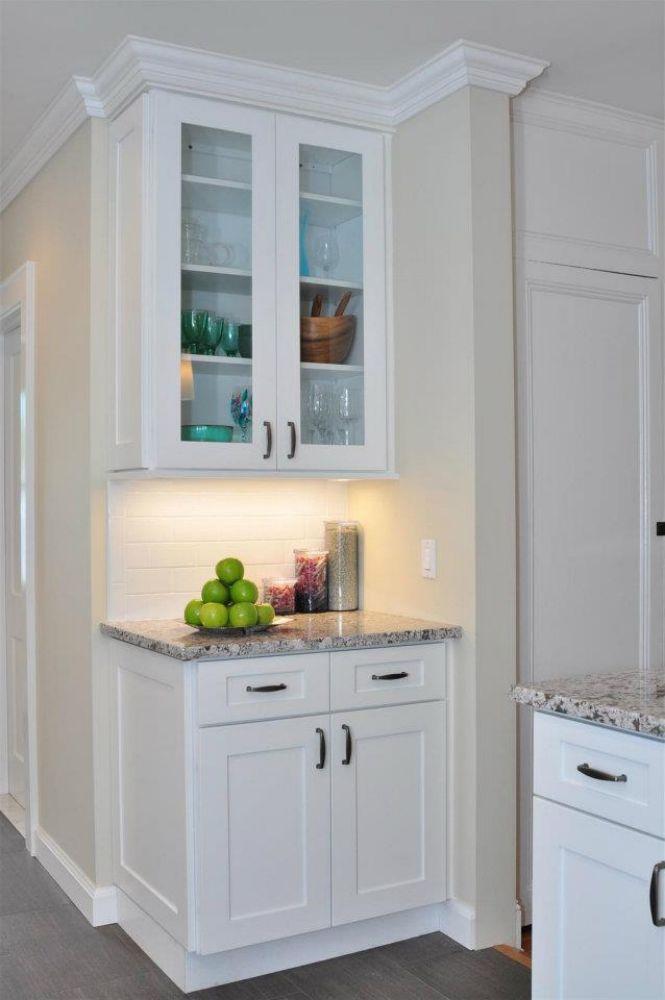The New Era of Wellness-Focused Cabinetry
Modern homeowners are redefining what it means to have a beautiful kitchen or bathroom. Beyond colors, finishes, and hardware, there is a growing awareness that true luxury comes from safety, sustainability, and health-conscious design. The demand for cabinetry that enhances both interior aesthetics and indoor air quality is stronger than ever.
This shift has led designers and manufacturers to explore Cabinet Design Ideas with Healthy Materials that promote wellness, reduce toxins, and support a cleaner environment. Cabinets built with low-VOC finishes, Greenguard Gold-certified materials, and sustainable wood choices are becoming the new gold standard in interior design.
For those seeking design inspiration and safety combined, the Cabinet Design Ideas with Healthy Materials featured by My Kitchen Cabinets offer exceptional solutions that meet modern style expectations while prioritizing environmental and human well-being.
Understanding Healthy Materials in Cabinet Design
Healthy materials are those that do not emit harmful chemicals or toxins into the air. In cabinetry, these include low-VOC adhesives, non-toxic finishes, sustainably sourced wood, and environmentally responsible hardware. Unlike conventional cabinetry, which can release formaldehyde and other volatile organic compounds, healthy cabinets contribute to improved indoor air quality and overall wellness.
Healthy materials go beyond chemical safety—they also consider sustainability, recyclability, and the ethical sourcing of raw materials. Choosing such materials ensures that your cabinets are not only stunning but also safe for your family and kind to the planet.
The Role of Indoor Air Quality in Cabinet Design
Cabinets are large furniture pieces that occupy significant portions of kitchens, bathrooms, and other storage areas. The finishes, adhesives, and composite woods used in their construction can have a major impact on indoor air quality.
Traditional materials often contain formaldehyde, phenol, and other VOCs that can off-gas for months or even years after installation. These emissions can contribute to respiratory issues, allergies, and other health problems.
By using healthy materials such as Greenguard Gold-certified plywood and water-based coatings, cabinet makers can drastically reduce these pollutants. This shift creates safer, fresher, and more comfortable indoor environments for families.
Sustainable Wood Choices for Cabinetry
Wood remains one of the most desired materials for cabinetry, but not all wood is created equal. Sustainable wood sourcing ensures that forests are responsibly managed, biodiversity is preserved, and environmental impacts are minimized.
Some of the most popular eco-friendly wood choices for Cabinet Design Ideas with Healthy Materials include:
-
Bamboo: A rapidly renewable resource that is durable, lightweight, and sustainable.
-
Reclaimed Wood: Reduces waste and adds unique character to cabinetry.
-
FSC-Certified Wood: Sourced from responsibly managed forests following environmental and ethical guidelines.
-
Maple and Birch: Naturally low in resins and formaldehyde emissions, making them excellent for eco-friendly cabinetry.
Using responsibly harvested wood contributes to the longevity of forests and ensures that every piece of cabinetry aligns with environmental preservation efforts.
Low-VOC and Non-Toxic Finishes in Cabinetry
One of the most important aspects of Cabinet Design Ideas with Healthy Materials lies in the choice of finishes. Traditional solvent-based paints and stains contain high levels of VOCs, which can linger in your home long after application.
Non-toxic, water-based, and low-VOC finishes provide the same durability and aesthetic appeal without compromising air quality. These finishes not only reduce chemical exposure but also produce minimal odor, making them safer during and after installation.
Popular non-toxic options include:
-
Water-Based Polyurethane: Durable and crystal clear, perfect for modern and traditional designs alike.
-
Natural Oils (Tung, Linseed, Hemp): Penetrate deeply to protect wood while emphasizing natural grain.
-
Plant-Based Waxes: Offer soft sheen and protection with zero emissions.
-
UV-Cured Coatings: Require no solvents and harden instantly under UV light.
These finishes highlight the wood’s beauty while keeping your living spaces safe and fresh.
Greenguard Gold Certification and Its Significance
When discussing healthy materials, one certification stands out: Greenguard Gold. This certification is awarded to products that meet strict standards for chemical emissions, ensuring they contribute to cleaner indoor air.
Greenguard Gold-certified cabinets undergo rigorous testing in controlled chambers, where emissions such as formaldehyde and VOCs are measured. Only products with emissions far below health-based thresholds are awarded certification.
For homeowners, this certification provides confidence that their cabinetry is safe for use in sensitive environments such as homes, schools, and healthcare facilities. By incorporating Greenguard Gold-certified products, designers and builders demonstrate a strong commitment to occupant well-being.
Eco-Friendly Adhesives and Glues
Adhesives play a crucial but often overlooked role in cabinetry manufacturing. Many traditional glues contain urea-formaldehyde and other harmful chemicals that can release toxic gases.
Eco-friendly adhesives are formulated using water-based or soy-based compounds that are both durable and safe. These adhesives help manufacturers meet emission standards without compromising structural strength or longevity.
Using non-toxic adhesives in Cabinet Design Ideas with Healthy Materials contributes to both indoor air quality and the overall environmental footprint of the finished product.
Hardware and Accessories Made from Healthy Materials
Healthy cabinet design extends beyond the wood and finish—it includes the hardware as well. Handles, hinges, and drawer slides made from sustainable metals such as stainless steel or aluminum are ideal choices.
Avoiding nickel-coated or plastic-based hardware reduces exposure to allergens and environmental toxins. Recycled metal hardware and powder-coated finishes also add durability without harmful chemicals.
Some manufacturers even offer bamboo or reclaimed wood handles to create a cohesive, eco-conscious design aesthetic.
Color and Design Trends with Healthy Materials
Healthy design doesn’t mean sacrificing style. In fact, eco-friendly cabinetry has inspired some of the most beautiful and timeless trends in modern interiors.
1. Natural Finishes and Neutral Tones:
Water-based stains and oils enhance the natural warmth of wood, creating serene, earthy aesthetics that promote calm and comfort.
2. Matte Textures:
Low-sheen finishes made with non-toxic materials give a soft, elegant appearance while reducing the need for chemical-laden gloss coatings.
3. Light and Airy Palettes:
Lighter woods such as birch, ash, and maple brighten interiors and pair beautifully with low-VOC paints.
4. Mixed-Material Designs:
Combining sustainable wood with glass, metal, or stone elements creates visual contrast while maintaining environmental responsibility.
These design choices not only align with eco-conscious values but also enhance the visual appeal of your home.
The Role of Lighting in Healthy Cabinet Design
Lighting also plays an important role in wellness-focused cabinet design. Energy-efficient LED lighting integrated into cabinetry enhances visibility while reducing electricity usage.
Unlike older fluorescent bulbs that contain mercury, modern LEDs are non-toxic and fully recyclable. When paired with Greenguard Gold-certified cabinets and low-emission materials, the entire kitchen or bathroom design promotes a safer, healthier indoor environment.
Soft, warm lighting can also emphasize the beauty of natural wood grains and non-toxic finishes, creating a harmonious and inviting atmosphere.
Innovative Storage Solutions with Healthy Materials
Modern cabinet design isn’t just about appearances—it’s about functionality and health. Incorporating Cabinet Design Ideas with Healthy Materials means integrating ergonomic and practical storage solutions that support an organized, low-stress environment.
Some innovative ideas include:
-
Pull-Out Pantries: Made from FSC-certified plywood with water-based finishes.
-
Recycled Glass Inserts: Offer a stylish, sustainable accent.
-
Bamboo Drawer Organizers: Naturally antimicrobial and renewable.
-
Soft-Close Hinges: Nickel-free hardware prevents finger injuries and minimizes allergens.
Each design element enhances functionality while supporting sustainable living and reducing environmental impact.
The Connection Between Healthy Cabinets and Sustainable Homes
Healthy cabinets are an essential part of sustainable home construction. They contribute to green building certifications like LEED (Leadership in Energy and Environmental Design) and the WELL Building Standard, which emphasize indoor air quality and occupant health.
By incorporating certified, low-emission cabinetry, builders and homeowners can earn points toward these programs. More importantly, they create living spaces that promote long-term wellness.
When a home’s design aligns with environmental sustainability, the result is not only beautiful but also beneficial for generations to come.
Cost Considerations for Cabinets Made with Healthy Materials
While eco-friendly and non-toxic materials may cost more upfront than conventional alternatives, the investment is worthwhile. The long-term benefits—better indoor air quality, reduced health risks, and extended product lifespan—far outweigh the initial expense.
Additionally, sustainable materials are becoming more accessible as demand increases, gradually reducing their cost difference. Choosing certified cabinetry is a long-term investment in both your home’s value and your family’s well-being.
Maintenance and Longevity of Healthy Cabinets
One of the key benefits of cabinets made with healthy materials is their durability and ease of maintenance. Non-toxic finishes resist peeling and fading, while natural oils and waxes can be easily reapplied to restore luster.
Here are a few maintenance tips:
-
Clean with mild, eco-friendly soap and warm water.
-
Avoid abrasive cleaners or synthetic solvents.
-
Maintain consistent indoor humidity levels.
-
Periodically apply natural oil or wax finishes to protect the wood surface.
Proper care ensures that your eco-friendly cabinetry maintains its natural beauty and functionality for decades.
Combining Aesthetics with Environmental Responsibility
The beauty of Cabinet Design Ideas with Healthy Materials lies in their seamless fusion of style and responsibility. Designers are now creating custom solutions that integrate natural textures, organic forms, and minimalist designs inspired by nature.
Whether you prefer a modern Scandinavian aesthetic with light birch cabinetry or a rustic farmhouse style featuring reclaimed oak, healthy materials enhance every design style while upholding sustainability.
This approach transforms cabinetry from mere storage solutions into statements of mindful living and conscious design.
The Future of Cabinet Design with Healthy Materials
The future of cabinetry is firmly rooted in health and sustainability. Manufacturers are developing advanced materials that push the boundaries of safety, functionality, and design.
Emerging trends include:
-
Zero-VOC and carbon-neutral production processes.
-
Bio-based composites made from agricultural byproducts.
-
Digital tracking systems for material transparency.
-
Recyclable modular cabinet systems for reduced waste.
These innovations reflect a global shift toward eco-conscious living—where every cabinet, panel, and finish contributes to a healthier world.
Conclusion
Incorporating Cabinet Design Ideas with Healthy Materials into modern homes is no longer a niche choice—it’s a necessity for health-conscious and environmentally responsible living. By choosing Greenguard Gold-certified products, low-VOC finishes, and sustainably sourced woods, homeowners can create interiors that are both beautiful and beneficial to well-being.
Cabinetry made from healthy materials enhances air quality, promotes sustainability, and supports long-lasting performance—all while reflecting elegant design sensibilities. From eco-friendly finishes to innovative hardware, every component plays a role in building safer, smarter, and more sustainable homes.
By embracing these design ideas, you’re not just elevating your space—you’re investing in the health of your family and the future of the planet.

